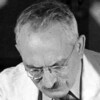Selman Waksman

Selman Waksman
Selman Abraham Waksmanwas a Russian-born, Jewish-American inventor, biochemist and microbiologist whose research into organic substances—largely into organisms that live in soil—and their decomposition promoted the discovery of Streptomycin, and several other antibiotics. A professor of biochemistry and microbiology at Rutgers University for four decades, he discovered over twenty antibioticsand introduced procedures that have led to the development of many others. The proceeds earned from the licensing of his patents funded a foundation for microbiological research, which established the Waksman Institute...
NationalityRussian
ProfessionScientist
Date of Birth22 July 1888
CountryRussian Federation
From the moment he is born to the moment he dies, man is subject to the activities of numerous microbes.
Antibiotics vary greatly in their chemical nature, mode of action upon different organisms, and effect upon the animal body. The selective action of antibiotics upon bacteria and other microorganisms is known as the antibiotic spectrum. Some antibiotics are characterized by a very narrow spectrum, whereas others possess a wide range of activity.
In learning to utilize antibiotics for the control of human and animal diseases, the medical and veterinary professions have acquired powerful tools for combating infections and epidemics.
In the development of antibiotics, the soil microbiological population has contributed more than its share. It is to the soil that the microbiologists came in search of new antibacterial agents.
It has been recognized since the dawn of microbiology that the soil is inhabited by a living microscopic population which is responsible for the numerous reactions that take place in the soil and that affect the life and economy of man in many ways.
Streptomycin belongs to a group of compounds, known as antibiotics, which are produced by microorganisms and which possess the property of inhibiting the growth and even of destroying other microorganisms.
The discovery of streptomycin as a product of a rather obscure group of microorganisms, the actinomycetes, led to the study of these organisms as potential producers of other chemotherapeutic substances.
The first true antibiotic to be derived from a culture of an actinomyces was isolated in our department in 1940. The organism, Actinomyces antibioticus, yielded a substance which was designated as actinomycin. It was soon crystallized, and its chemical and biological properties were established.
The soil is not a mass of dead debris, merely resulting from the physical and chemical weathering of rocks; it is a more or less homogeneous system which has resulted from the decomposition of plant and animal remains. It is teeming with life.
With the exception of autotrophic bacteria, the green, or chlorophyll-bearing, plants are the only living forms on this planet capable of synthesizing organic matter out of inorganic elements and simple compounds.